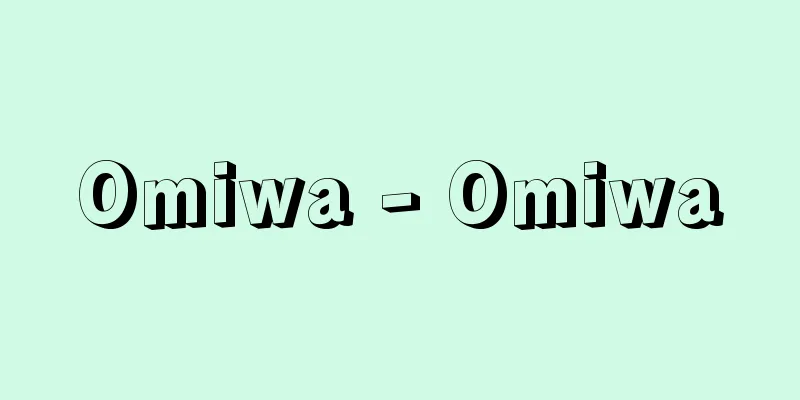Sei Ito

|
Poet, novelist, and critic. His real name was Hitoshi. He was born on January 17, 1905, in Sumiyakizawa Village, Matsumae County, Hokkaido (now Shirakami, Matsumae Town). He started writing poetry while attending Otaru Higher Commercial School (now Otaru University of Commerce), and became a member of the Shiinoki group led by Momota Soji, publishing a collection of poems entitled Yukiaari no Michi (Path in the Light of Snow) (1926). In 1928 (Showa 3), he left his job as a teacher at Otaru City Junior High School and moved to Tokyo, where he enrolled in Tokyo University of Commerce (now Hitotsubashi University). He turned from poetry to novels and criticism, and emerged in the literary world as a leading theorist and writer of "neopsychologism" influenced by Freud and James Joyce, publishing a collection of critiques entitled Neopsychologism Literature (1932) and a collection of novels entitled Seibutsu Matsuri (The Festival of Living Creatures) (1932). He then attempted to use the methods of 20th-century literature to create works that captured the artistic essence of poetry and autobiographical novels. After novels such as Town and Village (1937-1938) and The Life and Opinions of Tokuno Goro (1940-1941), he published Narumi Senkichi (1946-1948), a masterpiece of modern intellectual literature that combined various forms such as poetry, novels, critiques, and plays, after the Second World War. At the same time, he attracted attention with his collection of essays, The Method of Novels (1948), which revealed the autobiographical nature of modern Japanese novels by comparing them with those of Western Europe. In 1950 (Showa 25), he was indicted on suspicion of obscenity for his translation and publication of D. H. Lawrence's Lady Chatterley's Lover, which led to the so-called Chatterley Affair. Although he was found guilty in the end, he used his experiences in the legal battle to write humorous essays such as "The Life and Opinions of Ito Sei-san" (1951-1952), "Twelve Chapters on Women" (1953), and the full-length novel "The Phoenix" (1949-1953), which became best-selling novels. His subsequent full-length works included the autobiographical novel "A Portrait of a Young Poet" (1954-1956), "Flood" (1956-1958) and "Excavation" (1962-1964), which explored human egoism and philistinism, "Transformation" (1967-1968), which depicts sexuality in old age, and "Flowers Year after Year" (1962-1963), which chronicled the life of his father. He also wrote the large-scale works "History of the Japanese Literary World" (1952-1969) and "Diary of the Pacific War" (1983). In 1968, he became a member of the Japan Art Academy. He died of stomach cancer on November 15, 1969. [Hiroyoshi Sone] "The Complete Works of Ito Sei, 24 volumes (1972-1974, Shinchosha)" ▽ "The World of Ito Sei, by Kamei Hideo (1969, Kodansha)" ▽ "Ito Sei, by Senuma Shigeki (1971, Fuyukisha)" ▽ "A Discussion of Ito Sei, by Hayakawa Masayuki (1975, Yagi Shoten)" ▽ "Biography of Ito Sei, by Sone Hiroyoshi (1977, Rokuko Publishing)" ▽ "Ito Sei, by Okuno Takeo (1980, Ushio Publishing)" [References] | |Source: Shogakukan Encyclopedia Nipponica About Encyclopedia Nipponica Information | Legend |
|
詩人、小説家、評論家。本名整(ひとし)。明治38年1月17日、北海道松前郡炭焼沢村(現、松前町白神)に生まれる。小樽(おたる)高等商業学校(現小樽商科大学)時代から詩を書き始め、百田宗治(ももたそうじ)主宰の『椎(しい)の木』同人となり、詩集『雪明りの路(みち)』(1926)を出版。1928年(昭和3)、小樽市中学校教諭を辞めて上京、東京商科大学(現、一橋大学)に入学。詩から小説、批評に転じ、フロイトやジェームズ・ジョイスの影響を受けた「新心理主義」の代表的理論家兼実作者として文壇に登場し、評論集『新心理主義文学』(1932)、小説集『生物祭』(1932)を出した。その後、20世紀文学の方法を利用して詩や私小説の芸術的エッセンスを作品化することを試みた。『街と村』(1937~1938)、『得能(とくのう)五郎の生活と意見』(1940~1941)などの小説を経て、第二次世界大戦後、詩、小説、評論、戯曲などのさまざまな形式を組み合わせた現代知識人文学の代表作『鳴海(なるみ)仙吉』(1946~1948)を発表すると同時に、日本近代小説の私小説的性格を西欧と対比しながら明らかにした評論集『小説の方法』(1948)を出して注目された。1950年(昭和25)に翻訳・出版したD・H・ローレンスの『チャタレイ夫人の恋人』が猥褻(わいせつ)文書の疑いで起訴され、いわゆるチャタレイ事件が起こった。結果は有罪に終わったが、この裁判闘争の体験を生かして戯文エッセイ『伊藤整氏の生活と意見』(1951~1952)、『女性に関する十二章』(1953)、長編『火の鳥』(1949~1953)などを書き、ベストセラー作家になった。その後の長編に自伝小説『若い詩人の肖像』(1954~1956)、人間のエゴイズムと俗物性を追求した『氾濫(はんらん)』(1956~1958)や『発掘』(1962~1964)、老年の性を描いた『変容』(1967~1968)、父の生涯を記録した『年々(ねんねん)の花』(1962~1963)などがあり、ほかに大著『日本文壇史』(1952~1969)、『太平洋戦争日記』(1983)がある。1968年、芸術院会員。昭和44年11月15日、胃癌(いがん)のため死去。 [曾根博義] 『『伊藤整全集』全24巻(1972~1974・新潮社)』▽『亀井秀雄著『伊藤整の世界』(1969・講談社)』▽『瀬沼茂樹著『伊藤整』(1971・冬樹社)』▽『早川雅之著『伊藤整論』(1975・八木書店)』▽『曾根博義著『伝記伊藤整』(1977・六興出版)』▽『奥野健男著『伊藤整』(1980・潮出版社)』 [参照項目] | |出典 小学館 日本大百科全書(ニッポニカ)日本大百科全書(ニッポニカ)について 情報 | 凡例 |
Recommend
Grand Duchy of Tuscany
A Grand Duchy in the Tuscany region of central Ita...
mechanical line
…In the machine assembly industry, when the work ...
Asbjornsen, PC (English name)
…After nearly a century of rampant educationalism...
Hijaz Railway - Hijaz Railway (English spelling) al-Ḥijāz
A railway line between Damascus in Syria and Mecca...
Barton, DHR (English spelling) BartonDHR
...But in the 20th century, Odd Hassel (1897-1981...
Hino Suketomo
Year of death: Shokei 1/Genkō 2.6.2 (1332.6.25) Ye...
Umbrella - Gosan
A book of haiku formulas. Short for Haikai Gokasa....
Trung Sisters - Hai ba Trung
The Trung Sisters. Vietnamese national heroes who ...
Analysis
One of the major branches of mathematics, along w...
Emperor Tianzuo (English: Emperor Tianzuo)
1075‐1125 The ninth emperor of the Liao dynasty in...
Alnico Magnet - Alnico Magnet
A permanent magnet made of an alnico alloy. It has...
Kinutamono - Kinutamono
A classification of Japanese music. It includes No...
Equitable estoppel
...A general term for compounds formed by the deh...
Tsuneharu Ookubo
1675-1728 A daimyo in the mid-Edo period. Born on...
Haute Provence Observatory - Haute Provence Observatory
... In 1930, an observatory was built at Pic du M...


![Kutsuki [Village] - Kutsuki](/upload/images/67cb69b087c5c.webp)


![Takanezawa [town] - Takanezawa](/upload/images/67cc1da5b1aa0.webp)



